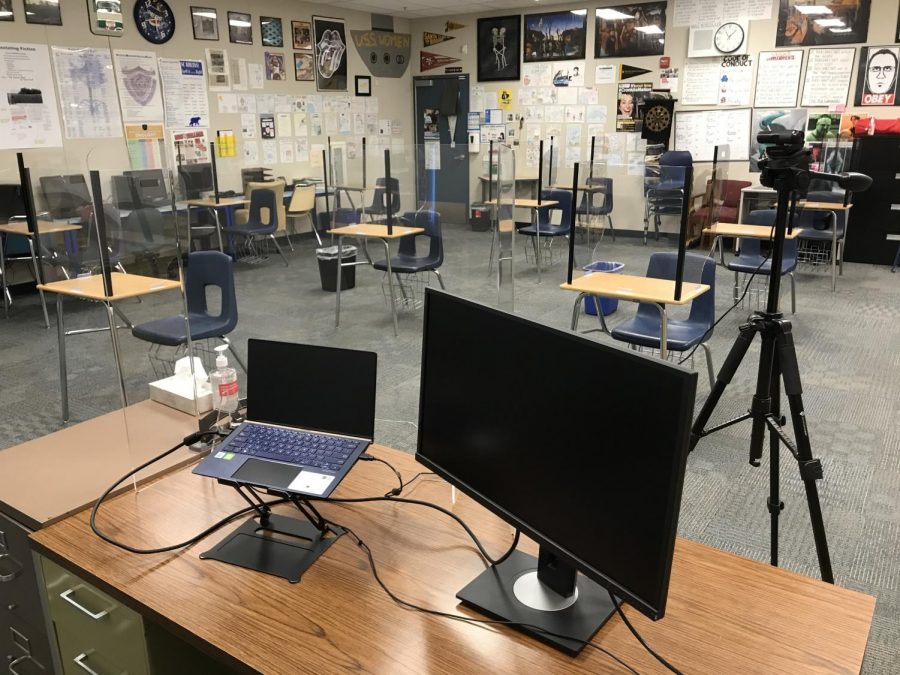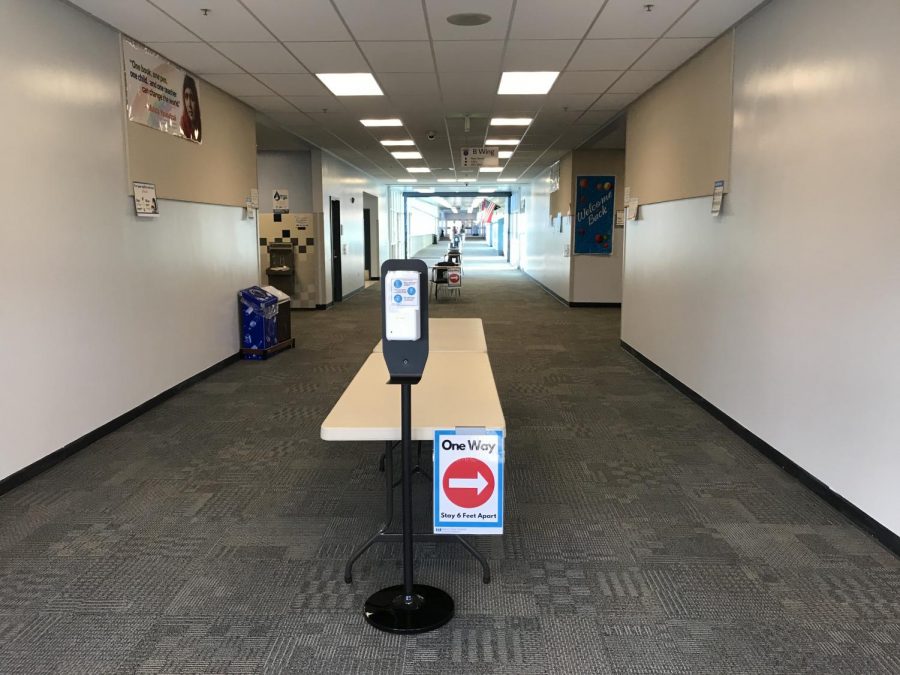Students and staff share their thoughts on returning to school for in-person distance learning
All classrooms are equipped with socially-distanced desks and shields.
On Wednesday, March 24, Santa Clara County transitioned to the Orange Tier, allowing SCUSD to move forward with their phased-in approach to hybrid learning, eliciting mixed reactions from the Bruin community. Whether students choose to return to physical school or stay at home, they will be affected by the change.
For sophomore Amanda Weinger, returning to the classroom is not worth the hassle this late in the school year.
“I’ve done so well on online school. I’m worried that when I go back into regular school, it will be a little bit of a shock and my grades (will) fall because, obviously, you get to see people again,” Weinger said. “We’ve gone this long with doing online. I know I can stick it out another three months and just finish the year off the way we started it.”
Others, like freshman Pranathi Ravipati, do not have as many weighing concerns about the effect on their grades when it comes to in-person classes.
“For me, it’s like if we’re learning the same thing in school and online, it doesn’t really matter to me which one I do,” Ravipati said. “When it’s mandatory for me to go back, I’ll go because I don’t really have a preference.”
Returning to physical classes is not only a game-changer for students, but teachers as well.
“I’ll actually have to put on something other than sweatpants. I’ll have to actually drive to school,” math teacher Bill Cheney said. “I’m not sure yet how I’m going to adjust it for both students in class and online. It will depend on how many students are actually in the class and how I set things up.”
Spanish teacher Jose Gomar has a slightly different perspective.
“I don’t think it’s going to be more difficult. I think it’s just going to be a new adjustment that I am going to have to be able to keep an eye on two things, which is going to be the live class in front of me and then the online classes,” Gomar said.
Taking into account the potential anxiety and stress caused by the change, the Virtual Wellness Center has created a plan for supporting members of the Bruin community, including virtual strategies from this year.
“Students that are already receiving a wellness service will continue receiving their service, whether they are on campus going to school, or online going to school,” wellness outreach worker Dupe Thomas said. “We’re still going to have the check-in form. All the resources online will continue to remain online.”
While the Wellness Center remains virtual, the counselors will meet with a limited number of students in-person by appointment only.
Although some students and staff have apprehensions about beginning hybrid learning, some are excited to experience the benefits of being on campus.
“I’m definitely looking forward to seeing my friends and having a form of human interaction again,” Weinger said. “I just miss going up and talking to my friends and hugging them, even having conversations with teachers – I just miss humans.”
Classrooms have been outfitted with more technology and features to help teach in a safe manner.
“I know we’re going to have web cameras so I’ll be able to do more illustrations on the screen, so that will be good,” Cheney said. “I’ll be able to do things on the whiteboard and project it that way to students.”
With only three months left of the school year, teachers have set goals and planned lessons. Gomar notes that his goals have changed as the year progressed.
“Being able to close strong and motivate students so they can do the work and finish up with a good note for their end of the year,” Gomar said. “I know it’s really challenging to do that now. I think that’s going to be my goal for the rest of the quarter.”
During these times, there is an immense amount of uncertainty, but one thing seems clear: the Bruin community will work together to safely get through the rest of the year.
“I am looking forward to this new stage and seeing what we are going to learn from it, so that we are better prepared for it next year,” Cheney said.
For more information on what to do and bring to the classroom, visit this PDF, shared by Principal Gregory Shelby.



